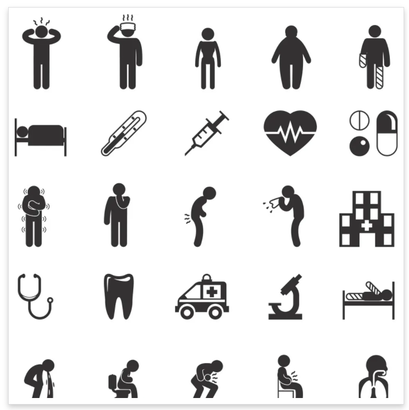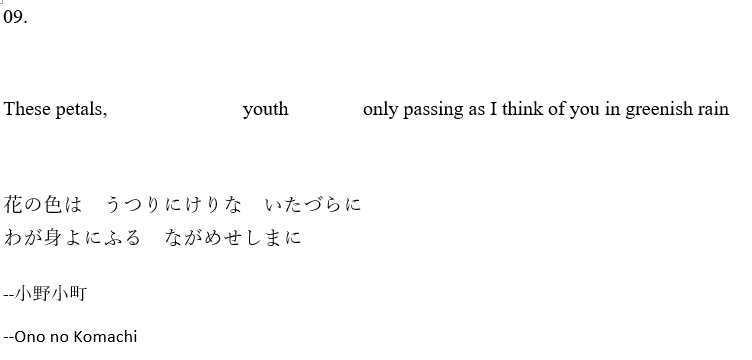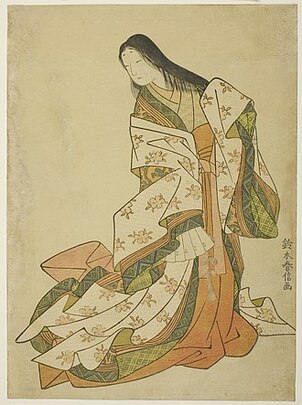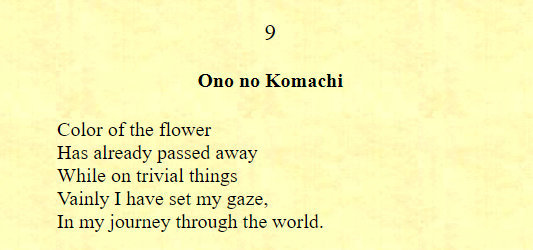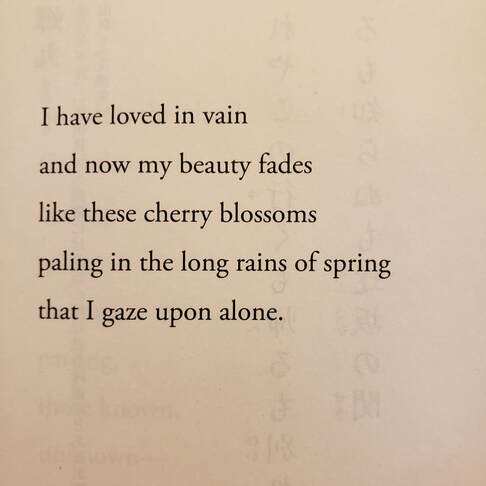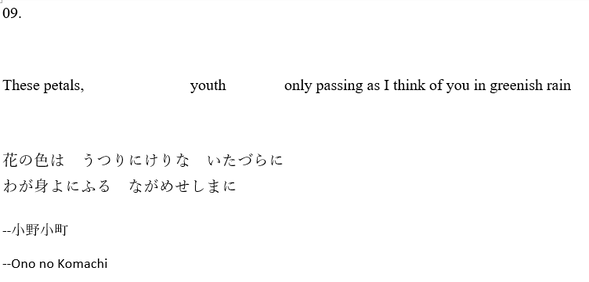Why do we study translations?
THAT is a question.
BECAUSE,
There are many translation APPs these days - - Google, Twitter, Instagram, and many other social media have translation functions. Foreign languages are more approachable than ever, despite the questionable accuracy of each program.
Translation APPs are indeed every convenient
AND are constantly improving.
THEN (I am going to ask you again)
WHY do we study translations?
BECAUSE,
There are many translation APPs these days - - Google, Twitter, Instagram, and many other social media have translation functions. Foreign languages are more approachable than ever, despite the questionable accuracy of each program.
Translation APPs are indeed every convenient
AND are constantly improving.
THEN (I am going to ask you again)
WHY do we study translations?
Outline:
- Necessary Act of Translation.
- Conveyorize Art of Translation.
Necessary Act of Translation
Imagine:
You probably use gestures to express WHERE and HOW much pain you have.
- You get a stomachache while visiting a country whose language is not English.
- You are not sure about the cause of your stomachache.
- You did not eat or drink unfamiliar foods.
- But the pain keeps returning.
You probably use gestures to express WHERE and HOW much pain you have.
In addition,
your doctor may bring you a pictograph.
When my nephew (six years-old) visited Chicago, he injured his head (because he was chasing his siblings in a tiny room). We rushed to Northwestern Memorial Hospital, and their emergency doctors used a pictograph to measure his pain. Even a six years-old child who did not understand English could point out his condition using the pictograph and communicate with the doctors.
THIS is a necessary act of translation.
You WANT to communicate with others who do not share your language.
your doctor may bring you a pictograph.
When my nephew (six years-old) visited Chicago, he injured his head (because he was chasing his siblings in a tiny room). We rushed to Northwestern Memorial Hospital, and their emergency doctors used a pictograph to measure his pain. Even a six years-old child who did not understand English could point out his condition using the pictograph and communicate with the doctors.
THIS is a necessary act of translation.
You WANT to communicate with others who do not share your language.
Here are more examples of Advanced Levels:
WHY do I want to learn their languages?
Because I want to communicate with people I meet.
- When I went to India for my friend's wedding, I wanted to say, "Thank you", "It was delicious", and "I love your dress" in Gujarati.
- When I met a Brazilian architect, we did not share a common language, but we could build up a friendship. Now, I learned how to cook Brazilian carrot cake from her.
WHY do I want to learn their languages?
Because I want to communicate with people I meet.
These Necessary Acts of Translation guide me to explore my current translation project,
WAKA - Poetry translation.
I HAD so many questions when I viewed things through an English speakers' perspective.
SO now we are entering the zone of Conveyorize Art of Translation.
WAKA - Poetry translation.
- What are some differences between WAKA and HAIKU?
- How can I translate 5-7-5-7-7 Japanese syllables into English?
- How can I transfer Japanese puns, jokes, and unusual grammatical structures to English speakers?
- Why are there not many Asian Women translation Waka & Haiku poems?
- Why do English speakers not know THE flower means cherry blossoms in waka poems?
I HAD so many questions when I viewed things through an English speakers' perspective.
SO now we are entering the zone of Conveyorize Art of Translation.
Conveyorize Art of Translation
This is one example that I recently translated.
花の色は うつりにけりな いたづらに
わが身よにふる ながめせしまに
Hananoirowa utsurinikerina itazurani
wagamiyonifuru nagameseshimani
Japanese syllables are
Hananoirowa (6) utsurinikerina (7) itazurani (5)
wagamiyonifuru (7) nagameseshimani (7)
Does Waka need to be 5-7-5?
WHY did the author (Ono no Komachi) decide to add one extra syllable?
花の色は うつりにけりな いたづらに
わが身よにふる ながめせしまに
Hananoirowa utsurinikerina itazurani
wagamiyonifuru nagameseshimani
Japanese syllables are
Hananoirowa (6) utsurinikerina (7) itazurani (5)
wagamiyonifuru (7) nagameseshimani (7)
Does Waka need to be 5-7-5?
- YES. The major rule is 5-7-5.
- NOT 6-7-5 (that was showed in this waka poem).
WHY did the author (Ono no Komachi) decide to add one extra syllable?
Ono no Komachi was always selected as the most beautiful woman in Japanese history.
She was SMART
BEAUTIFUL,
but INSECURE about her age.
This feeling may be universal.
Time & gravity may affect our looks.
Popular culture and attention may come & go.
THEREFORE,
she decided to use ONE ADDITIONAL SYLLABLE to express the emptiness of her age, time, and outlook.
That was a sensational technique back then.
How do other translators approach this additional syllable?
Let's review Clay MacCauley's (1917), Peter J. McMillan's (2017), and my translations.
She was SMART
BEAUTIFUL,
but INSECURE about her age.
This feeling may be universal.
Time & gravity may affect our looks.
Popular culture and attention may come & go.
THEREFORE,
she decided to use ONE ADDITIONAL SYLLABLE to express the emptiness of her age, time, and outlook.
That was a sensational technique back then.
How do other translators approach this additional syllable?
Let's review Clay MacCauley's (1917), Peter J. McMillan's (2017), and my translations.
Clay MacCauley's translation:
Peter J McMillan's translation:
Remember, Ono no Komachi used 6-7-5-7-7 syllables
instead of 5-7-5-7-7.
There are many beautiful and creative translation approaches in their translations.
BUT,
HER DECISION to use an additional syllable was not clear in their translations.
I am not saying this is GOOD or BAD.
I WANT to explore how I can express her decision of using an additional syllable in the first line.
THAT, I think
Translation APPs currently cannot approach.
Only humans who can create and think about the meaning of moving from 0 to 1.
- Color of the flower (6)
- Has already passed away (7)
- While on trivial things (6)
- Vainly I have set my gaze, (7)
- In my journey through the world. (7)
Peter J McMillan's translation:
- I have loved in vain (5)
- and now my beauty fades (7)
- like these cherry blossoms (6)
- paling in the long rains of spring (8)
- that I gaze upon alone. (7)
Remember, Ono no Komachi used 6-7-5-7-7 syllables
instead of 5-7-5-7-7.
There are many beautiful and creative translation approaches in their translations.
BUT,
HER DECISION to use an additional syllable was not clear in their translations.
I am not saying this is GOOD or BAD.
I WANT to explore how I can express her decision of using an additional syllable in the first line.
THAT, I think
Translation APPs currently cannot approach.
Only humans who can create and think about the meaning of moving from 0 to 1.
Again, I am showing my translation.
It is a one-line translation, unlike a five-line stanza.
There are two white blanks.
These petals, ーーーーーyouthーーーonly passing as I think of you
The green colors (the white blanks) have two meanings:
It is a one-line translation, unlike a five-line stanza.
- BECAUSE I am showing a timeline
There are two white blanks.
These petals, ーーーーーyouthーーーonly passing as I think of you
The green colors (the white blanks) have two meanings:
- The one additional syllable through which Ono no Komachi expresses her emptiness
- Youth and time passing. The word, "youth", is floating between petals (beauty) and passing (time).
Conveyorize Art of Translation is
This thinking process is simply coming from a Necessary Act of Translation.
One additional syllable (Ono no Komachi's decision) is my stomachache of waka translation. (I should not eat so much WAKA-WAKA.)
How can I convey this fantastic point to my English audiences?
- How I deliver Japanese culture and language to English speaking audiences.
- How I research and approach one particular fact to a translated piece.
This thinking process is simply coming from a Necessary Act of Translation.
One additional syllable (Ono no Komachi's decision) is my stomachache of waka translation. (I should not eat so much WAKA-WAKA.)
How can I convey this fantastic point to my English audiences?
